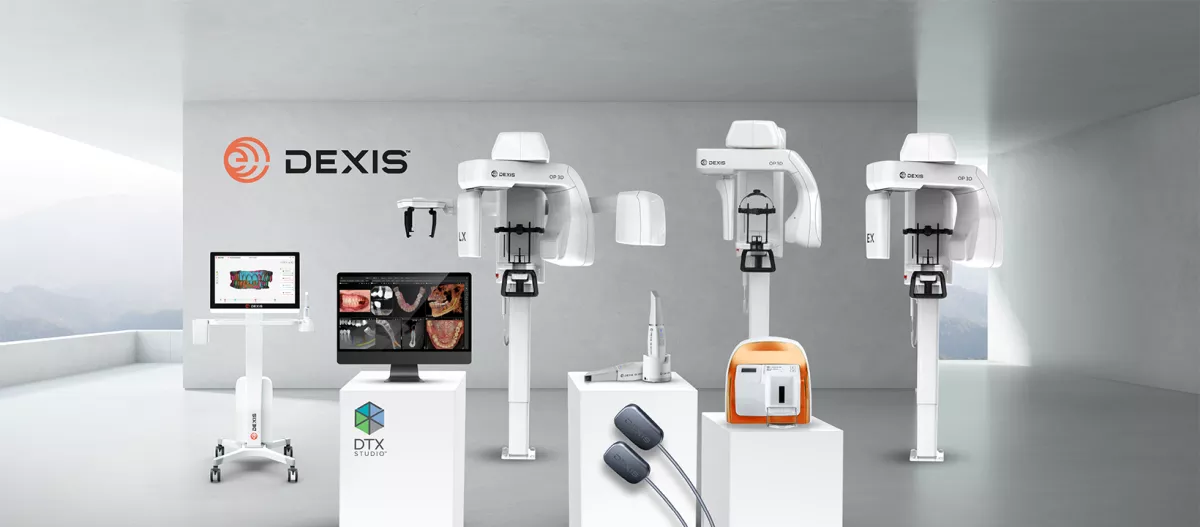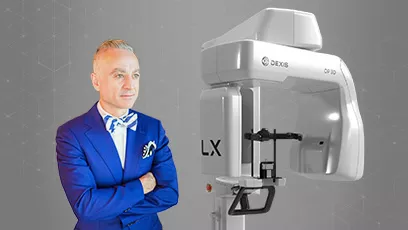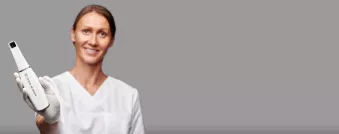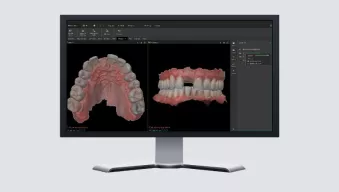
A Digital Ecosystem with ‘Plug and Play’ Simplicity
One clinician describes how a DEXIS digital workflow has transformed his practice, boosted patient communication, and paved the way for more accurate diagnoses.
Who takes a road trip without a GPS?
Probably no one.
It’s an example cited by Joe Mehranfar, DMD, MS, when describing the integral role CBCT plays in his full-arch implant workflow. For one thing, diagnosing with 3D imaging minimizes surprises, which are never a good thing in dentistry. That’s why he leverages a DEXIS digital workflow—and the CBCT, intraoral sensor, and software that guide it. When asked if he would consider practicing without them, Dr. Mehranfar gave a single-word answer: “never.”
“Without CBCT, you’re going into a patient case blindly,”
he shared. “It’s akin to driving a car in the dark, not knowing when or where the potholes are going to appear. In dentistry, having the benefits of CBCT makes it safer for our patients. I would never practice without CBCT in the field that I’m in.”

A Believer Since the Beginning
A CBCT user since the technology’s advent, Dr. Mehranfar uses the ORTHOPANTOMOGRAPH™ OP 3D™ LX, a next-generation, multimodality imaging platform that offers optimized 2D and 3D functions with reduced scan times. It also includes up to six field of view (FOV) options covering the full spectrum of extraoral imaging needs.
Largest Field of View—Ever
“The OP 3D LX has an option for the largest FOV of any DEXIS platform—15×20 cm—which is great for orthodontics, oral surgery, sinus procedures, or TMJ surgery,”
explained Dr. Mehranfar. “With the OP 3D LX, the entire maxillofacial region, including the mandible and maxilla, can be imaged in just one scan, and it's not double-stitched.”
The OP 3D LX offers high-resolution scans, 96 customizable FOV options, and four resolutions, including endo and low dose modes. The CBCT unit features an optional cephalometric modality, along with panoramic, extraoral bitewing, and 3D imaging. Paired with the DTX Studio™ Clinic software, Dr. Mehranfar can access implant planning tools with a variety of integrated options for guided surgery.
Seeing Beyond the Tooth
“Quite routinely, we see 'incidental findings,' where we will take a scan and perhaps see a blocked or clotted artery, or a pathology such as a cyst or mass that needs to be addressed,”
Dr. Mehranfar shared. “Those patients are grateful we use a technology that benefits them and allows us to diagnose those issues.”
Dr. Mehranfar also cites the intuitive interface, speed, and easy-to-use features that make the OP 3D LX a seamless addition to any digital workflow. “Believe it or not, it really is just clicking buttons,”
he shared. “The machine is very intuitive, and there's simply nothing you can mess up.”
A Sensor for Every Mouth
An equally essential part of Dr. Mehranfar's digital workflow is a DEXIS intraoral sensor, a component that has occupied a primary place in his workflow for over two decades, which now includes six thanks to his expanding Phoenix, AZ, implant practice. “I use DEXIS sensors because I want to be safe, predictable, and cost-effective,”
he shared. The DEXIS Ti2* intraoral sensor builds on the success of the DEXIS Titanium sensor—the No. 1 digital intraoral sensor in the country—and sports a housing design that is two times as durable and drop-resistant as previous generations. With access to DEXassist Solution, a 2D AI Dental finding tool, the Ti2 Sensor can automatically detect up to six types of pathologies on 2D radiographs. Its PerfectSize™ design allows the sensor to fit every mouth comfortably, while a WiseAngle™ cable reduces stress on the sensor cable connection. CleanCapture™ technology captures high-resolution images by reducing noise and enhancing anatomical detail. “DEXIS sensors provide a good patient experience and a predictable result, in terms of acquisition,”
he shared. “It’s a push of a button—there’s no complexity—and within seconds, I have the image.”
The Power of DTX Studio Clinic
Dr. Mehranfar pairs both his OP 3D™ and DEXIS sensors with DTX Studio™ Clinic, a powerhouse imaging platform that streamlines diagnostic and treatment planning processes and is packed with assisted-intelligence software. “The great thing about DTX Studio Clinic is its ease of use, the maneuverability, and the output,”
Dr. Mehranfar said. “The assisted intelligence features increase the usability and allow my workflow to be faster and more predictable.”


